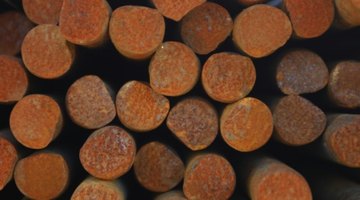Rebar Splicing Specifications
The Building Code for the American Concrete Institute (ACI) lists rebar splicing specifications that must be followed or the rebar structure will not pass inspection.

While there are many factors that determine the kind of splice to be used, mechanical or lap, builders need to be aware that splicing on a project can be specified so that it exceeds the ACI regulations by the Engineer of Record.
Lap
A lap splice is when two pieces of rebar are tied together where the bars overlap. The length of the overlap is calculated by using the equation 30 times the bar diameter. A minimum of four sets of ties are then evenly spaced along the lap length. Bar numbers 14 and 18 (1.6 and 2.3 inches diameter), bars in tensural tie, joint and flexural locations, such as those found in bridges and some column designs, cannot be lap spliced according to the Building Code of the American Concrete Institute (ACI 318: 12.14.2.1; 12.15.5 and 23.3.2.3).
Mechanical
Mechanical splices use metal channel devices to connect two pieces of rebar. Typically, the rebar must have threaded ends to fit into the mechanical splice and then the splice is tightened onto the bar. Lentons and couplers are common names used to refer to mechanical splices. This splice is used for bars too large for lap splicing or, in situations in which the splice may have to be undone at some later point, such as when connecting a column to a setting rig.
Transitional
Transitional splicing is used to change from one bar size to another. With a mechanical splice, each threaded end will be a different size and with lap splicing, the splice is determined by calculating 30 times the diameter of the larger bar. Transitional splicing is most commonly found in column structures that narrow as they rise.
General Notes
Rebar splicing specifications, although regulated by the Building Code of the American Concrete Institute (ACI 318), are site specific and determined by the Engineer of Record on the project. Splicing specifications will never be less than what is required by the ACI, but may call for a longer length or specific mechanical splice device. The specifications for splicing rebar will be listed in the General Notes section of the Structural Drawings issued for each project and stamped by the Engineer of Record and Building Inspector to indicate their approval.
The Drip Cap
- The Building Code for the American Concrete Institute (ACI) lists rebar splicing specifications that must be followed or the rebar structure will not pass inspection.
- A lap splice is when two pieces of rebar are tied together where the bars overlap.
- Transitional splicing is used to change from one bar size to another.
- Rebar splicing specifications, although regulated by the Building Code of the American Concrete Institute (ACI 318), are site specific and determined by the Engineer of Record on the project.
References
Writer Bio
Cassandra Tribe has worked in the construction field for over 17 years and has experience in a variety of mechanical, scientific, automotive and mathematical forms. She has been writing and editing for over 10 years. Her areas of interest include culture and society, automotive, computers, business, the Internet, science and structural engineering and implementation.
Photo Credits
- Photos.com/Photos.com/Getty Images
- Photos.com/Photos.com/Getty Images
More Articles



